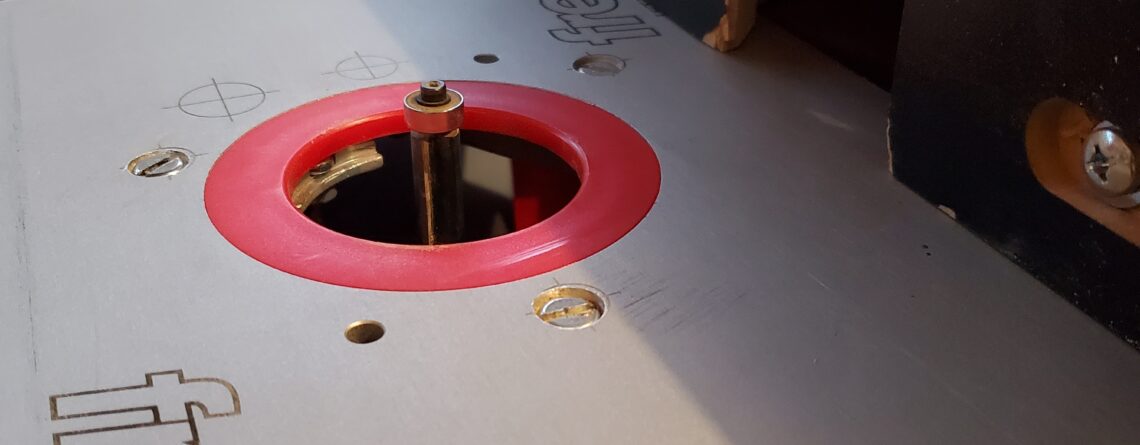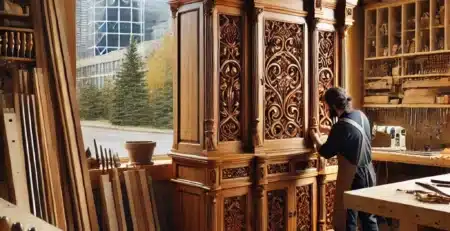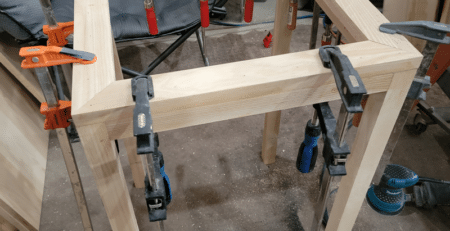Amazing Uses for Router Tables
A woodworking enthusiast knows the importance of owning the right tools for all of their projects. One of the many crucial tools is something called a router table. This piece of equipment can be used for a wide variety of purposes when it comes to different woodworking projects. With an excess of different uses, a router table makes it easier to handle and work on different materials that are used in a woodworking project. There are different ways through which a person can get the most out of their router table. However, firstly it is important to understand the basics of this equipment and learn how woodworkers can enhance their woodworking projects.
What Is A Router?
A router is a type of spinning tool used by woodworkers to shape or hollow out chunks of wood for their woodworking projects. It is a handheld device that comes in two types: fixed-base routers and plunge routers.
Usually, a plunge router seems to be more versatile as compared to a fixed base router. It can be used to make things like grooves, smooth fluting, mortices, dadoes, and so much more. On the other hand, fixed base routers are great when it comes to smaller trims and edge work that requires more precision. This makes them the ideal router for all joinery projects.
What Is A Router Table?
A router table is used to simplify the woodworking projects. A handheld router is fixed into a router table in an upside-down position, towards the tabletop’s underside. The router bit or cutter is going to be protruding through a hole from within the table’s surface. The material that needs reshaping is then moved along the table as it gets cut or shaped along the spinning bit.
Router tables also come with several different accessories that help with the shaping and cutting of different materials. Router tables come in two types: benchtop and free standing. Benchtop router tables are usually easier to transport due to their lightweight, while freestanding router tables are bigger in size but have removable legs; hence, they can be used as benchtop tables as well.
How Is A Router Table Used?
When using a router table, a person will move the material being used against the router instead of using the router itself to cut or shape the material. In this case, the user has much more control while guiding the material rather than directly using the router on the material.
A typical router table will have safety components, miter slots, a mountain plate, and a fence that’s adjustable providing the user with added adjustability according to their needs. At first, using the router table might look a bit complicated, especially if the woodworker has been using the handheld version for a while, but this is an important piece of equipment when it comes to serious woodworking projects.
What Are The Common Uses For A Router Table?
1. Router Table Helps With Narrow, Small, Or Long Materials
A router table can be used to route thin or small pieces of material since routing these materials manually is a difficult process. There are push tools that can be used when it comes to guiding thin or small pieces of material through the router on the table.
Also, long pieces of stock, like moulding, will be easier to edge on the router table as compared to using a handheld router since the table is better able to support this along with other pressures and guides as it’s pushed across the router table.
2. Router Cutters That Have A Large Diameter Can Be Used On A Router Table
Router tables can be useful when there are larger bits or cutters. A large size router that’s over 38mm in diameter will be difficult to control as a handheld router, particularly when cutting the materials’ edges. Therefore, using larger router cutters in a router table is a much better and also safer option where the user will have more control.
3. Router Table Can Be Used To Router The Same Cut Several Times
Applications that require cutting a large quantity of the same cuts are best done using a router table. Once the router table has been set up with its fence plus other accessories, the user can just simply guide several pieces of material along the table. This is better and more efficient than having to use a handheld router plus other accessories for every new piece of material. This arrangement will be perfect when it comes to cutting multiple slots, grooves, dadoes, mortises and tenons, rebates, and sliding dovetails.
4. Router Table Can Be Used To Make Raised Panel Doors
The parts that are required to make a panel door can’t be created by using a handheld router tool. However, these parts can be made by using a router table. Certain aspects of the door’s frame need to be machined very accurately in order for the door to properly join together. This is pretty much impossible to achieve when it comes to using a handheld router. Plus, the user also has to use the raised panel router cutters that have quite large cutter diameters, and this isn’t suited to be used with handheld routing.
5. Router Table Can Be Used To Router Stopped Cuts
Stopped cuts are cuts that don’t continue for the complete length of the material. They can be decorative or practical, depending on the user’s preference. In order to achieve these cuts, a user can quickly set up their router table fence with stops that will allow them to easily create repeated stopped cuts.
Conclusion
With a router table, the router tool becomes a lot more versatile as there are numerous uses for it now in this new position. An expert woodworker is aware of the importance of a good router table and knows how to properly utilize it. Hence, every woodworker, amateur or professional, should have a high-quality router table in their woodworking arsenal.
If you are looking for expert woodworking services, then ‘The Original Assistant’ is the perfect place for all of your woodworking needs.












